
The Early Days of Bolo Ties
The History of Bolo Ties. The history of the classic bolo tie can be traced back to the late 19th century in the American Southwest. The exact origin of the bolo tie is subject to some debate, but it is commonly associated with the Western states of Arizona and New Mexico.

Bolo Tie Guide to History, Style, Options, and Fit Liberty Leather Goods
According to urban legend, the bolo tie was devised in the 1940s by Victor Cedarstaff, an Arizona cowboy who was working in Wickenburg. Cedarstaff was weary of losing his traditional necktie to the wind while riding his horse, so he created a new one out of leather cord and a silver buckle.
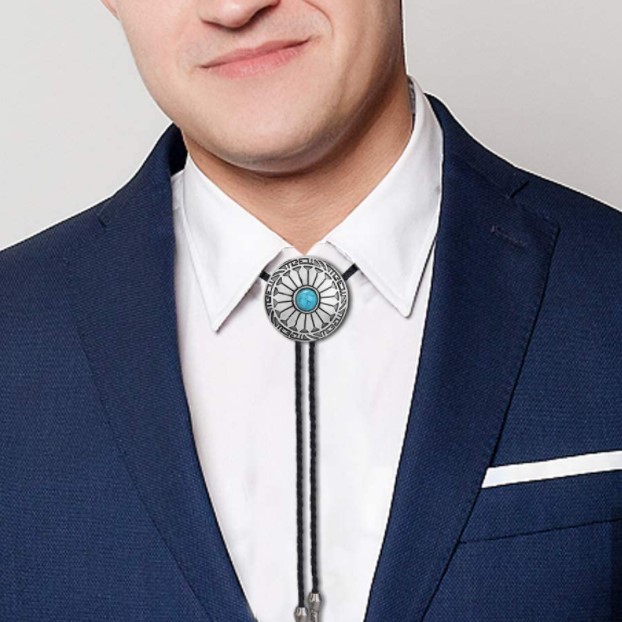
How to Wear a Bolo Tie Read This First (2023)
WHEREAS, A singular fashion associated with the American West is the bolo tie, also known as the bola tie, which is distinguished by its decorative clasp that fastens a length of cord or string; a staple of the western-wear fashions sported by a large number of Texans, the bolo tie conjures up the romance of the pioneer era and speaks to the det.
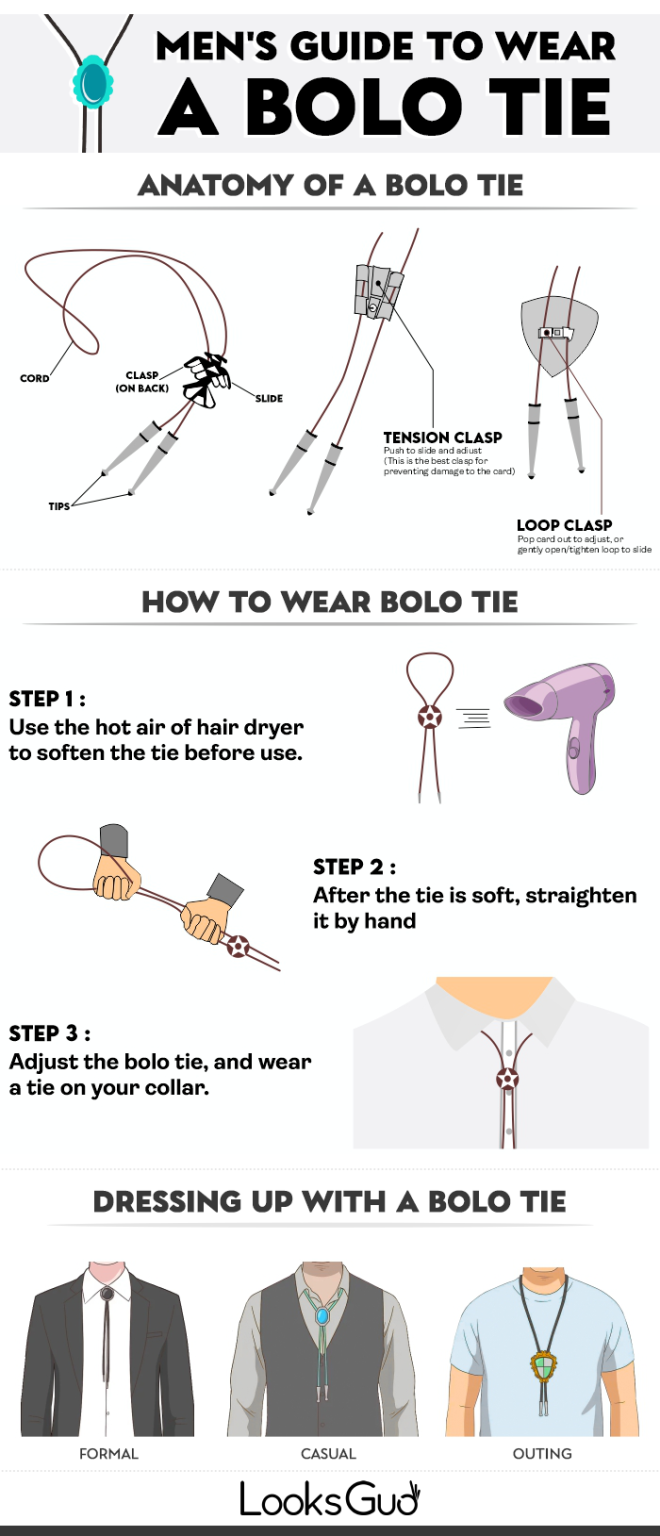
How to Wear a Bolo Tie?
Bolo ties consist of a length of cord or leather, often braided, with metal tips on each end, worn around the neck with a decorative clasp or slide holding it in place. As reported by Native.
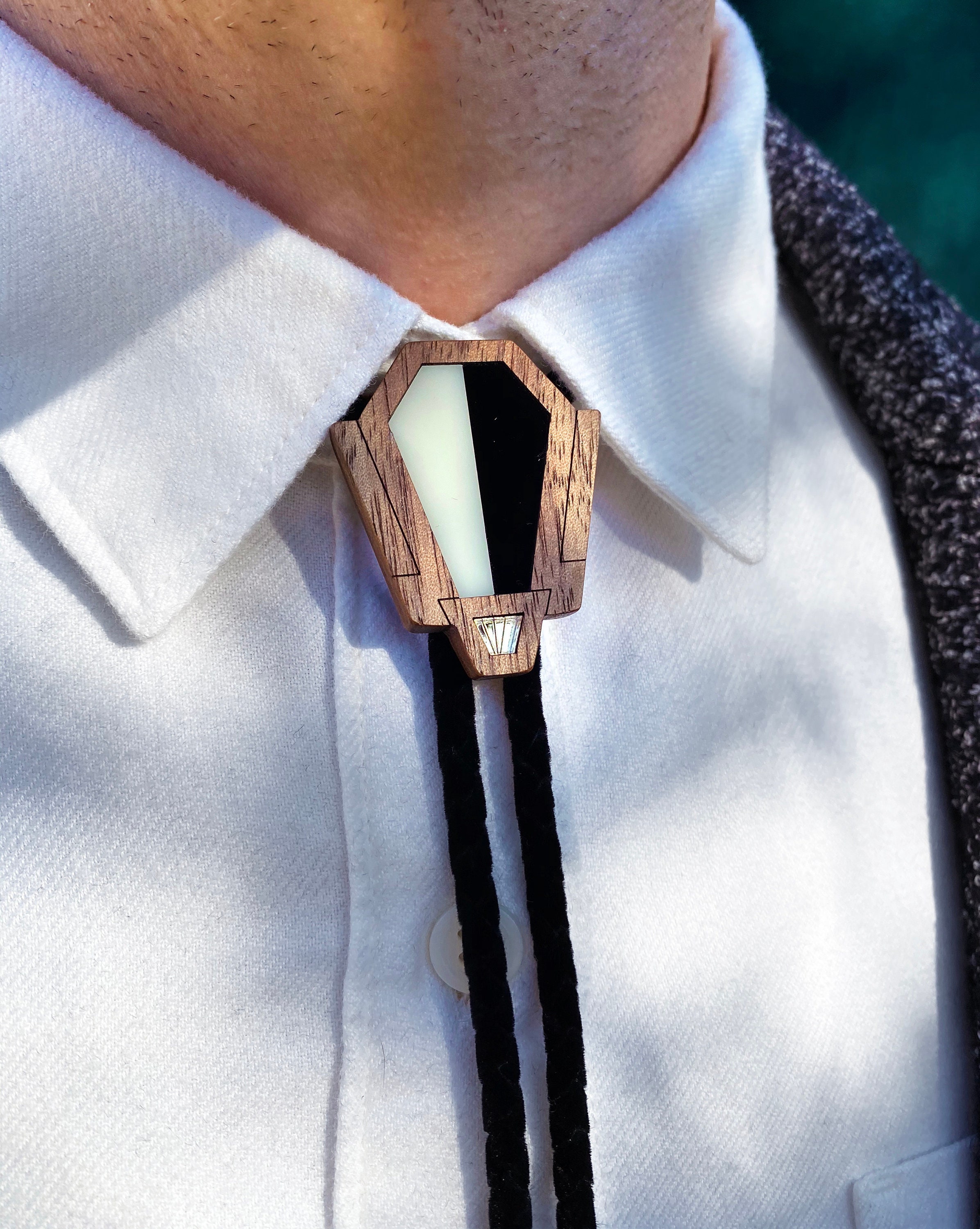
Bolo Tie History ubicaciondepersonas.cdmx.gob.mx
A thin, string-like material (laced or braided) is clasped together by a slide, through which the string is strung using tips at the ends, and voila—you have a bolo tie. But where did this casual style of neckwear get its start? And how did it become the classic, yet sophisticated fashion accessory that it is today? Let's take a look.
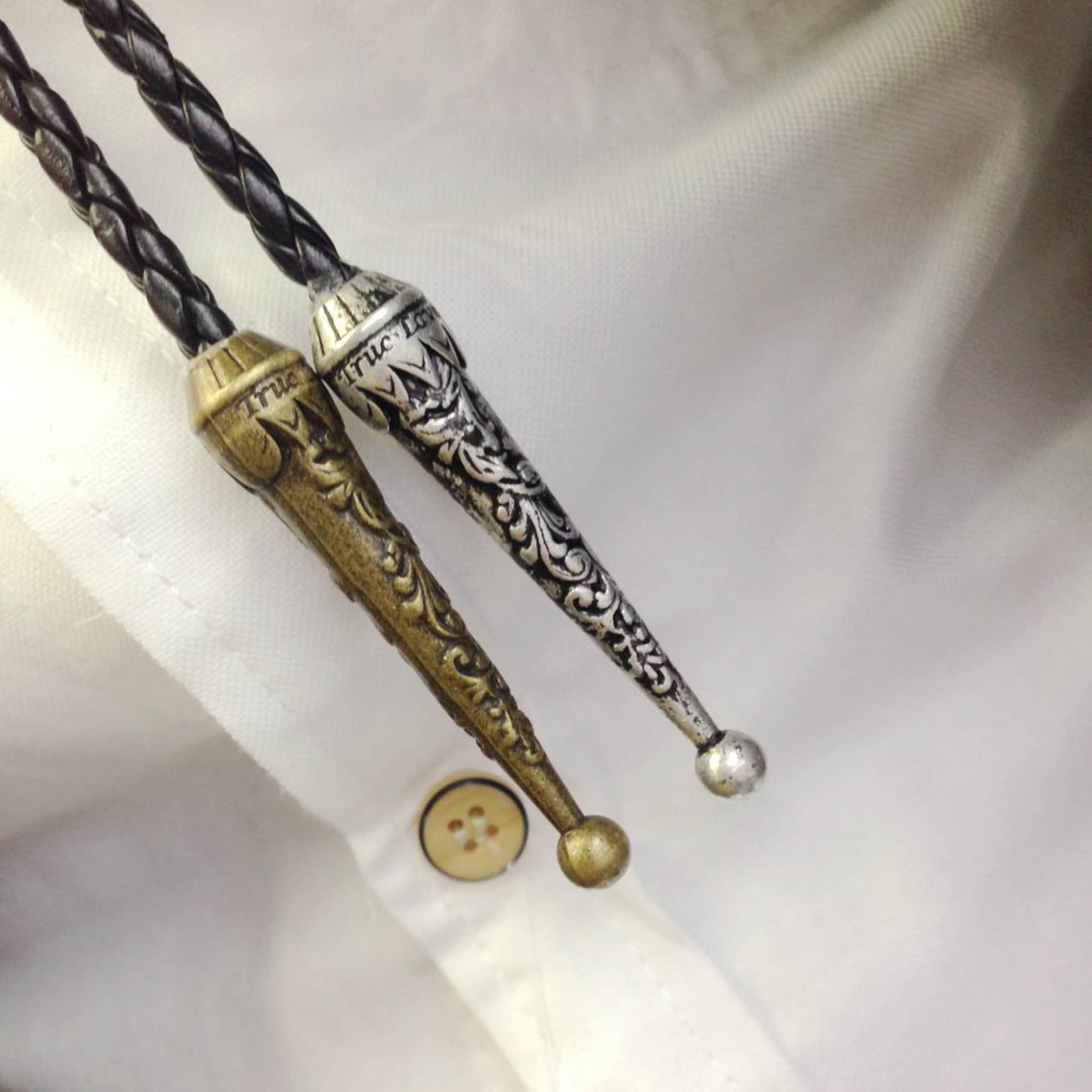
Bolo Tie Ends Vintage Bolo Tie Tips Bolo Tie Supplies Gold Etsy Canada
Texas designated the bolo tie (also spelled bola) as the official state tie in 2007. Arizona and New Mexico also recognize this unique southwestern neckwear as a state symbol. All Cultural Heritage Symbols House Concurrent Resolution WHEREAS, The State of Texas has customarily recognized a variety of official symbols as tangible representations of the state's culture and natural history; and
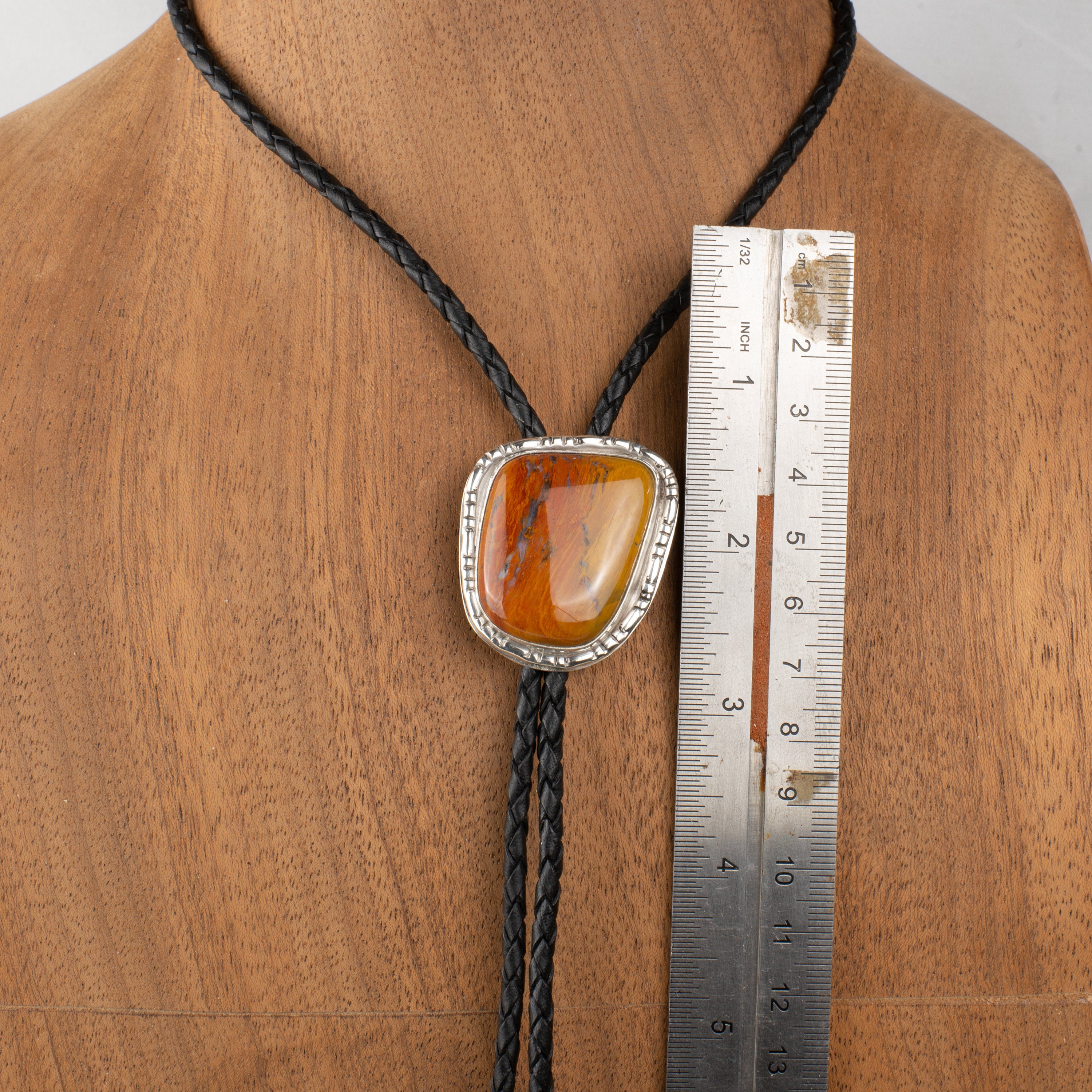
Arizona Rainbow Petrified Wood Bolo Tie, Handmade Sterling Silver Bolo, Western bolo tie for men
A Brief History Legend has it that a fellow by the name of Victor Cedarstaff of Wickenburg, AZ 'invented' the bolo (or bola) tie in the late 1940s. "Wary of losing his silver-trimmed hatband, he slipped it around his neck.". His buddy teased him that it was a "fine lookin' tie" & ol' Vic was off to the races.
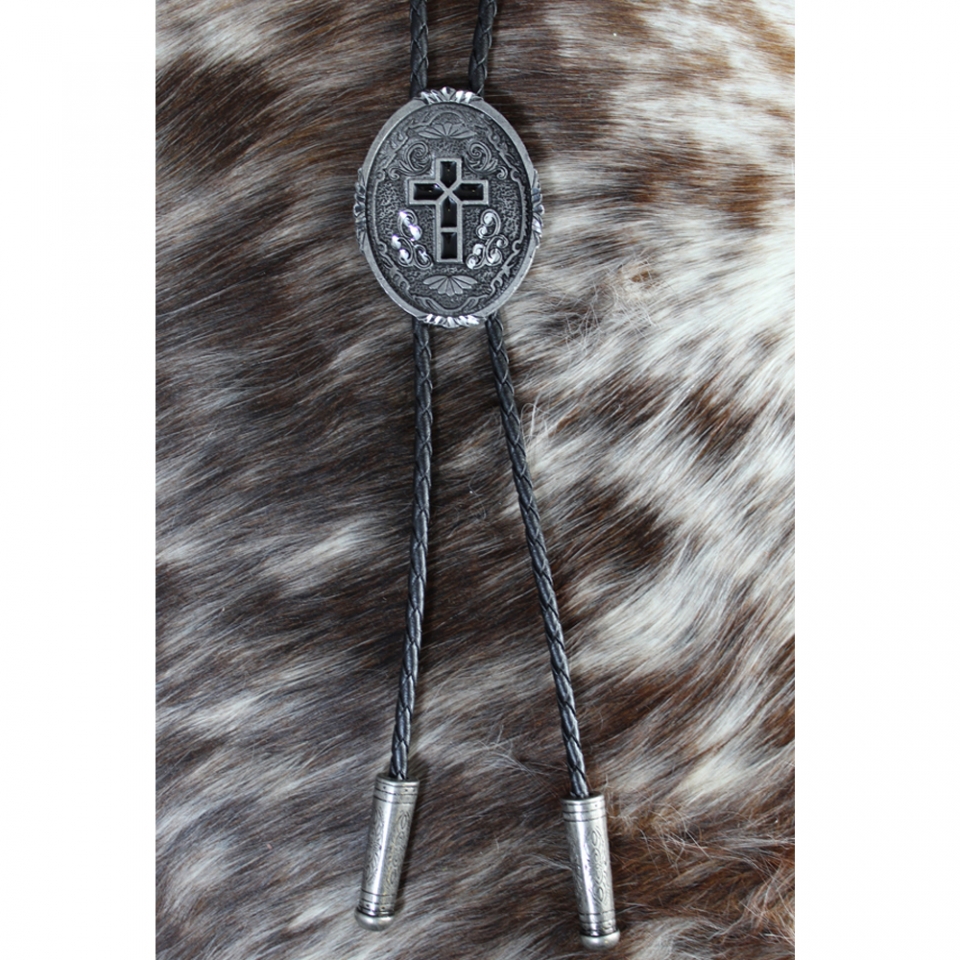
Bolo Tie History ubicaciondepersonas.cdmx.gob.mx
Worn across the Western United States since the early 1900s, bolo ties began as a Native American accessory before becoming the recognizable and well-loved state neckwear of Arizona, Texas, and New Mexico. Throughout the years, they have been called many names including slide ties, cowboy ties, gaucho ties, and neck ropes. Bolo Tie Origins
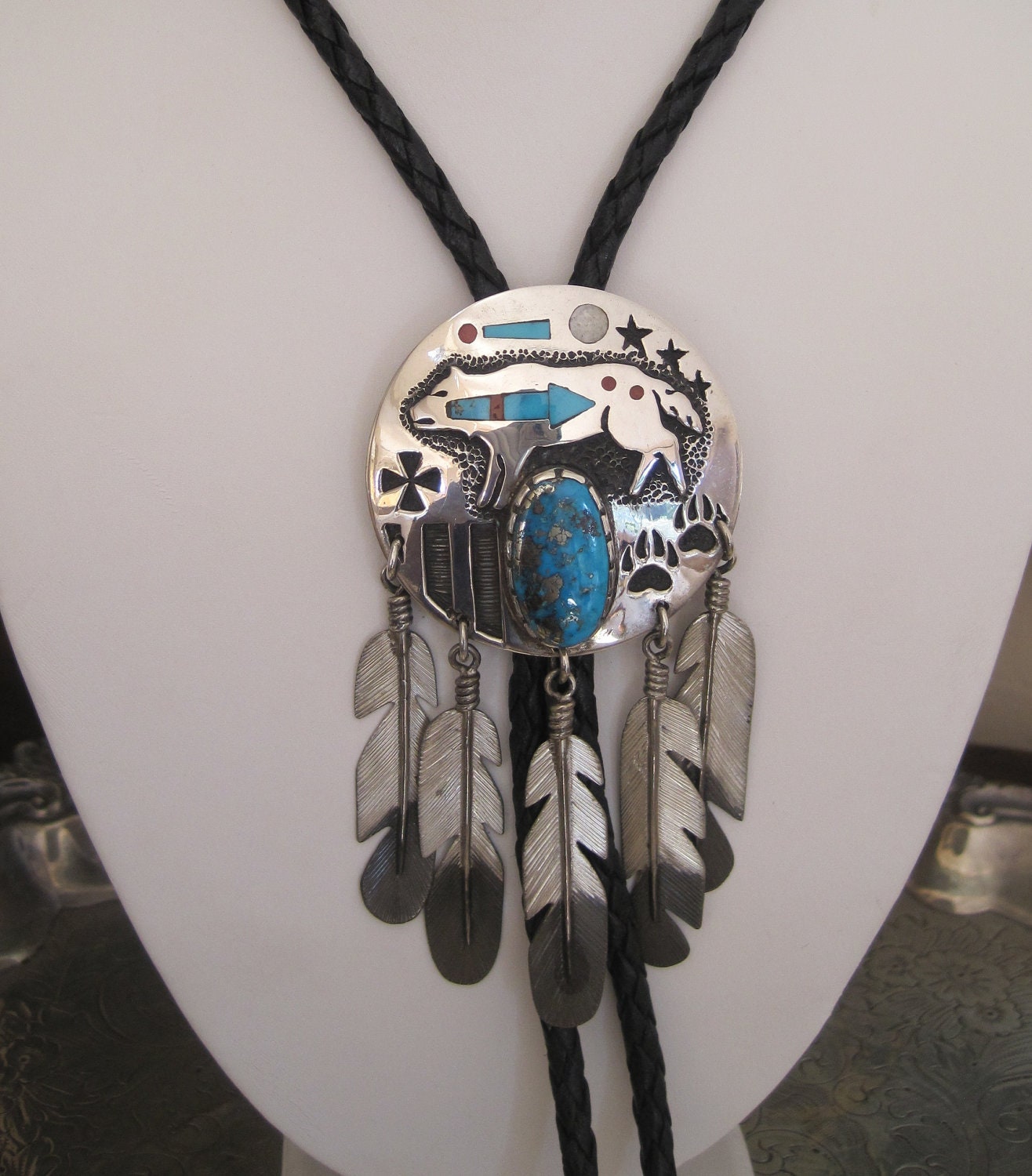
Vintage Hopi Native American Bolo Tie Sterling by sprucedroost
Bola Bill Kramer wrote "'Bola Tie: New Symbol of the West" in 1978. In his tome, he shares what he considers the authoritative version of the origins of the bolo tie. He chronicles the story of Victor E. Cedarstaff, a silversmith who lived in Arizona in the 1940s.

Bolo Tie Guide to History, Style, Options, and Fit Liberty Leather Goods
The origins of the Bolo tie come from a small western anecdote. One day, a cowboy named Victor Emanuel Cedarstaff was riding his horse when his hat blew off. When he was afraid of losing his hatband, he cleverly slipped it around his neck. It's believed that his companion sarcastically complemented Cedarstaff's 'tie', and a new icon was born.

Bolos Adam Schallau Photography Bolo tie, Native american jewelry, Native jewelry
The bolo tie is a fashion accessory that is worn around the neck, consisting of a leather cord, and secured in place by a metal slide clip (bolo). The style originates with Native American accessories in the 1900s, and soon spread as popular fashion in the Western United States. Bolo clips are available in a variety of materials, sizes, and styles.

Two Vintage Bolo Ties
BY Victoria Mechler A traveling exhibition examines the history and artistry behind the Southwest's most iconic neckwear. Bolo ties made by Victor Cedarstaff in the 1950s bear his stamp of a.

Bolo Tie Guide to History, Style, Options, and Fit Liberty Leather Goods
Bolo ties originated in the 1930s, when Native American men from Zuni, Hopi, and Navajo tribes typically tied bandanas around their necks with string or shell-like structures. Their original version of this accessory was forged into what we now know as bolo ties.

Bolo Tie’s History Corbeto's Boots Blog
HISTORY OF BOLO TIES View fullsize V. E. CEDARSTAFF, SLIDE FOR A NECKTIE - Patent Filed May 24, 1954 As an avid bolo tie historian, it's important that I begin at the beginning, even if only briefly. The widely accepted origin of the bolo tie rests with an Arizonian named Victor Cedarstaff.
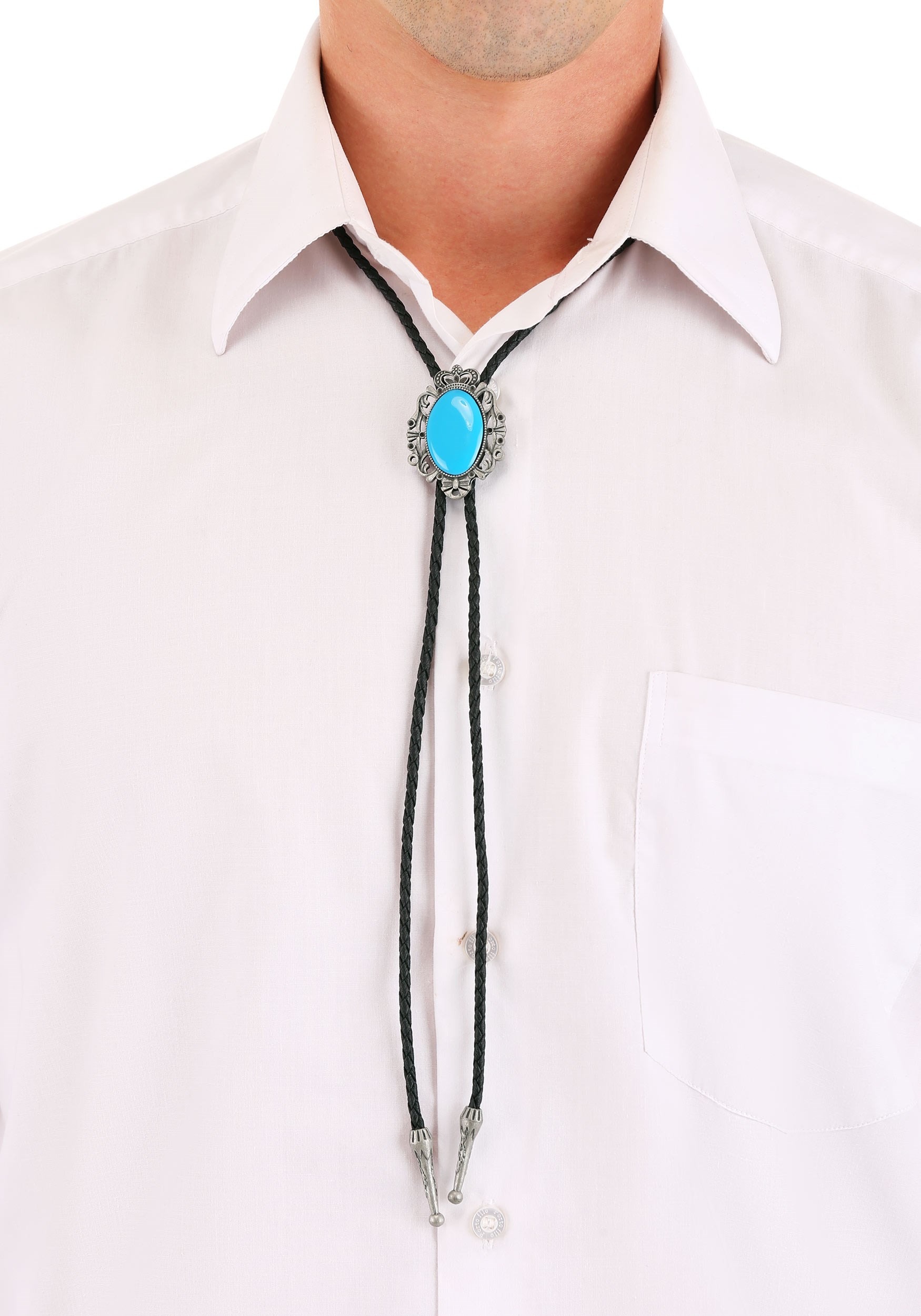
Western Skies Bolo Tie Accessory
Bolo ties, also known as bola ties, are iconic accessories that have a rich history deeply rooted in Western and Native American culture. Let's explore the fascinating journey of bolo ties and their significance in American fashion. Origins in Native American Tradition

Discovering the Artistry of the Bolo Tie Cowboys and Indians Magazine
Origins Victor Cedarstaff of Wickenburg, Arizona, claims to have invented the bolo tie in the late 1940s and later patented his slide design. [10] According to an article in Sunset : Victor Cedarstaff was riding his horse one day in Wickenburg, AZ where he was a cowboy when his hat blew off.